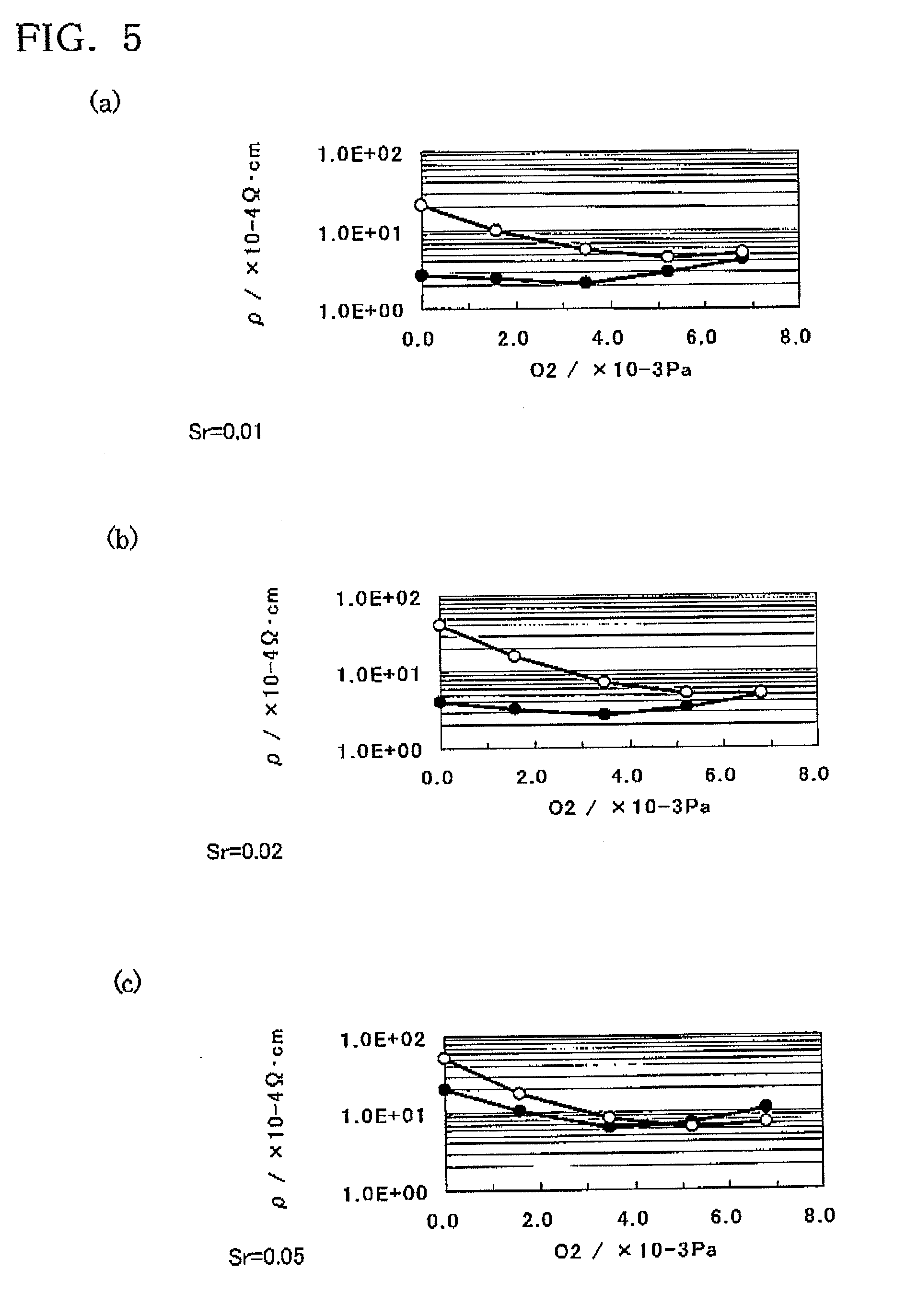Process for producing indium oxide-type transparent electroconductive film
a technology of transparent electroconductive film and indium oxide, which is applied in the direction of vacuum evaporation coating, coating, semiconductor devices, etc., can solve the problems of difficult depositing such a transparent conductive film in an amorphous state, film exhibits a lower transparency than that of ito film, and the resistance of the film tends to increase, so as to achieve easy patterned with a weak acid
- Summary
- Abstract
- Description
- Claims
- Application Information
AI Technical Summary
Benefits of technology
Problems solved by technology
Method used
Image
Examples
example 1
[0081]A >99.99%-purity In2O3 powder, a >99.99%-purity SnO2 powder, and a >99.9%-purity SiO2 powder were provided. These powders (total: about 2.5 Kg) were provided so that Si and Sn were respectively about 0.026 mol and 0.1 mol on the basis of 1 mol of In. The powders were formed into a compact through a filtration molding method. Thereafter, the compact was fired in an oxygen atmosphere at 1,550° C. for eight hours, to thereby produce a sintered compact. The sintered compact was processed, to thereby produce a target having a density of 7.01 g / cm3 (relative density of 100% with respect to the theoretical density). The target was found to exhibit a bulk resistivity of 2.4×10−4 Ω·cm.
[0082]While the oxygen partial pressure was varied from 0 to 4.0 sccm (corresponding to 0 to 2.0×10−2 Pa), a film (thickness: 1,200 Å) was deposited from the thus-obtained target through DC magnetron sputtering under the following conditions.
Target dimensions: φ=8 inches, t=6 mm
Mode of sputtering: DC magn...
examples 2 and 3
[0086]A >99.99%-purity In2O3 powder, a >99.99%-purity SnO2 powder, and a >99.9%-purity BaCO3 powder were provided.
[0087]Firstly, In2O3 powder (BET=27 m2 / g) (58.5 wt. %) and BaCO3 powder (BET=1.3 m2 / g) (41.4 wt. %) (total: 200 g) were mixed by means of a ball mill in a dry state, and the mixture was calcined in air at 1,100° C. for three hours, to thereby yield BaIn2O4 powder.
[0088]Subsequently, the above-obtained BaIn2O4 powder, In2O3 powder (BET=5 m2 / g), and SnO2 powder (BET=1.5 m2 / g) (total: about 1.0 kg) were provided so that Ba and Sn were respectively 0.02 mol and 0.1 mol on the basis of 1 mol of In (Example 2), or so that Ba and Sn were respectively 0.005 mol and 0.3 mol on the basis of 1 mol of In (Example 3). These powders were mixed by means of a ball mill. Subsequently, the mixture was mixed with an aqueous PVA solution serving as a binder, dried, and cold-pressed, to thereby prepare a compact. The compact was debindered in air at 600° C. for 10 hours with temperature elev...
example 4
[0096]In2O3 powder (BET=5 m2 / g) and SnO2 powder (total: about 1.0 kg) were provided so that Sn was 0.25 mol on the basis of 1 mol of In. These powders were mixed by means of a ball mill. Subsequently, the mixture was mixed with an aqueous PVA solution serving as a binder, dried, and cold-pressed, to thereby prepare a compact. The compact was debindered in air at 600° C. for 10 hours with temperature elevation at 60 degrees (° C.) / h, and then fired in an oxygen atmosphere at 1,600° C. for eight hours, to thereby produce a sintered compact. In the firing process, specifically, the temperature was elevated from room temperature to 800° C. at 100 degrees (° C.) / h and from 800° C. to 1,600° C. at 400 degrees (° C.) / h, was kept at 1,600° C. for eight hours, and was lowered from 1,600° C. to room temperature at 100 degrees (° C.) / h. Thereafter, the sintered compact was processed, to thereby produce a target having a density of 7.14 g / cm3. The target was found to exhibit a bulk resistivity ...
PUM
| Property | Measurement | Unit |
|---|---|---|
| temperature | aaaaa | aaaaa |
| temperature | aaaaa | aaaaa |
| transmittance | aaaaa | aaaaa |
Abstract
Description
Claims
Application Information
 Login to View More
Login to View More - R&D
- Intellectual Property
- Life Sciences
- Materials
- Tech Scout
- Unparalleled Data Quality
- Higher Quality Content
- 60% Fewer Hallucinations
Browse by: Latest US Patents, China's latest patents, Technical Efficacy Thesaurus, Application Domain, Technology Topic, Popular Technical Reports.
© 2025 PatSnap. All rights reserved.Legal|Privacy policy|Modern Slavery Act Transparency Statement|Sitemap|About US| Contact US: help@patsnap.com



